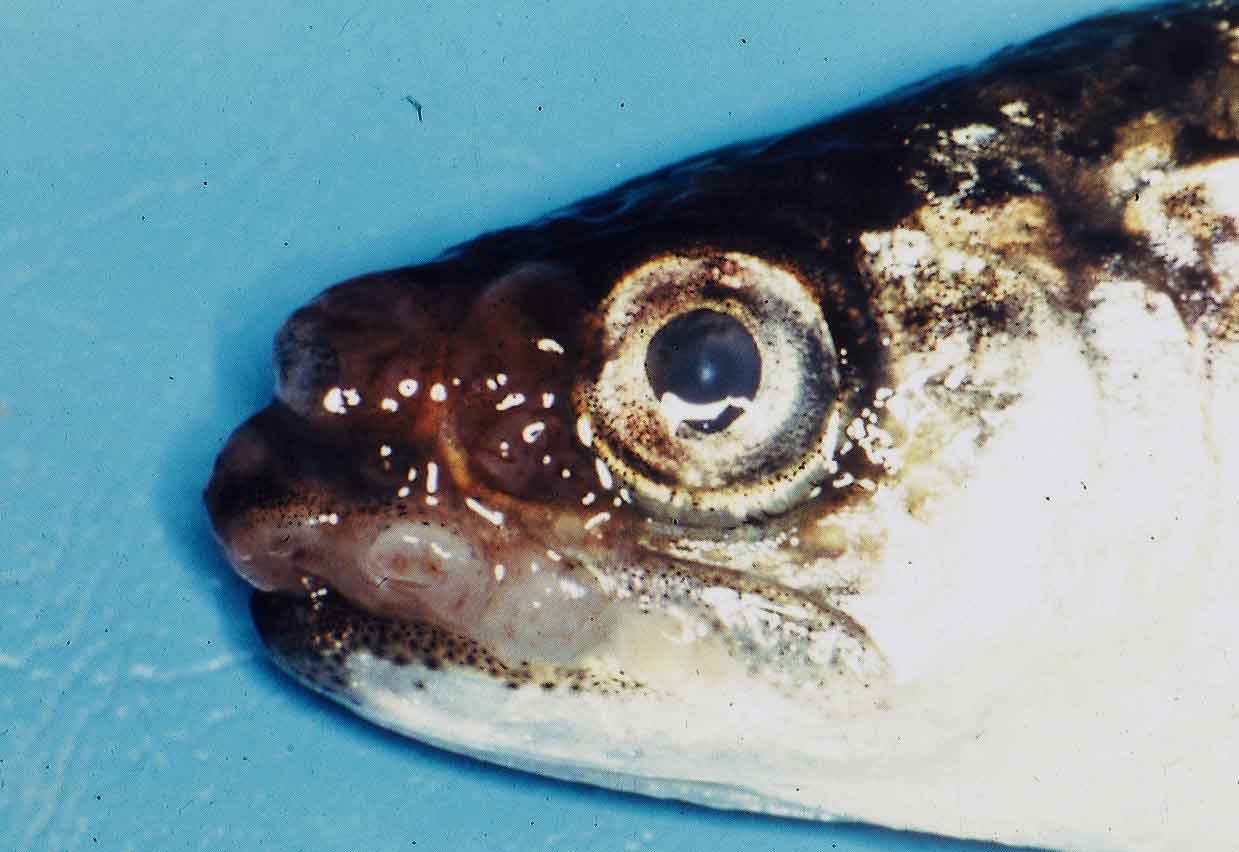
| Pathogen | Oncorhynchus masou virus: OMV |
|---|---|
| Taxonomy | Herpesviridae |
| Hosts | Salmonid fishes including masu salmon (Oncorhynchus masou) and coho salmon (O. kisutch). |
| Disease name | Viral rerioral basal cell epithelioma |
| Infection site | Mouth |
| Clinical signs | Epithelial tumors are formed around the jaw (Fig. 1). |
| Virology | The pathogen is a DNA virus having a hexagonal capsid (ca. 100 nm in diameter) and an envelope (220-240 nm). It shows distinctive CPE i.e. marked syncytium formation when incubated with the cell derived from salmonid fish. The suitable temperature for proliferation is 10-15.C. and it is inactivated more than 20 C. (Yoshimizu, 2004). |
| Pathology | Though diseased fish exhibits tumors (basal cell carcinoma) around the head and jaw, the disease is not fatal. |
| Health hazard | Since this virus is not infectious to human, it is harmless in food hygiene. |
| Diagnosis | Presumptive diagnosis can be performed by the clinical signs. It is needed for definitive diagnosis to check the CPE and confirm the identification by a serological or PCR method after virus isolation. |
| Other information | This disease is known as the first case which a fish tumor is experimentally produced for the first time. Recently, the disease hardly occurred since quarantine management is thoroughly practised. |
| References |
Yoshimizu, M (2004): Viral diseases Infectious and parasitic diseases of fish and shellfish. (ed. by Wakabayashi, H. and K. Muroga), Koseisha Koseikaku, pp.29-128. (In Japanese) |

(Photo by T. Awakura)
Fig. 1. Epithelioma caused by OMV